IKEA in China: Big Furniture Retail Adapts to the Chinese Market
China has enjoyed rapid economic development since it opened its doors to the international market. The living conditions in China have significantly improved due to the economic strength China has gained. With the continuous improvements, the purchase power parity has driven China’s furniture market to develop. The population of China has become more willing to invest in home decoration as a mean of the improvement of the standard of living. IKEA in China has risen from the opportunity provided by China’s growing furniture market.
Performance of China’s furniture market: decreasing performance in 2018
According to the National Bureau of Statistics, in 2015, there were 5,290 furniture enterprises in China with a total estimation of 769.61 million pieces of furniture produced. China’s furniture industry has made tremendous progress, and the country has become a world-class location for setting up furniture factories and an important export base. According to the Chinese Family Development Report in 2014, there were roughly 430 million households and it is expected to be 500 million by 2030 in all provinces of China. To add to that, the low labor cost and large consumer market in China has attracted many foreign furniture enterprises. Due to large differences in practices throughout the country, China’s furniture industry is neither homogeneous nor predictable. Chinese consumer expectations and purchasing behaviors have marked regional variations, particularly for products reflecting cultural and personal tastes.
Sales volume stabilizing
The sales volume of furniture experienced growth in 2016 and 2017. Nevertheless, in 2018, it decreased to 758.79 million. In the same time, the market size of China’s furniture industry shrunk to 525.33 million RMB in comparsion with 732.98 million RMB in 2017. This is due to the fact that China’s furniture market was highly affected by the performance of the real estate market in China. In 2018, the policy of China’s real estate market became tightening thus it led to decreasing performance of China’s furniture market.
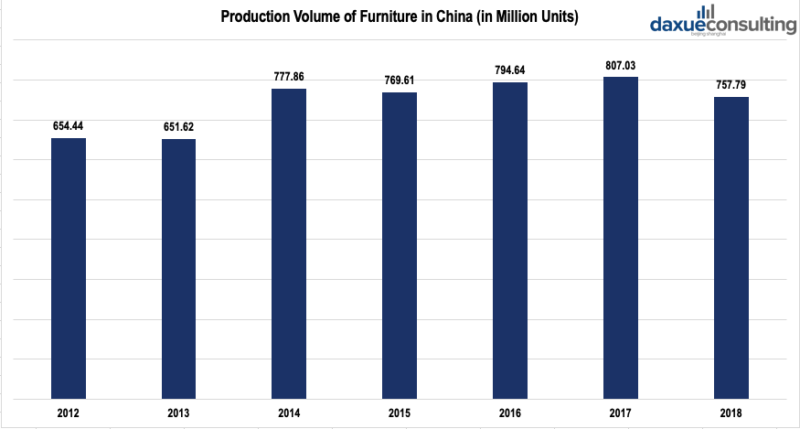
[Data
source: chyxx, ‘Production volume in China’s furniture market’]
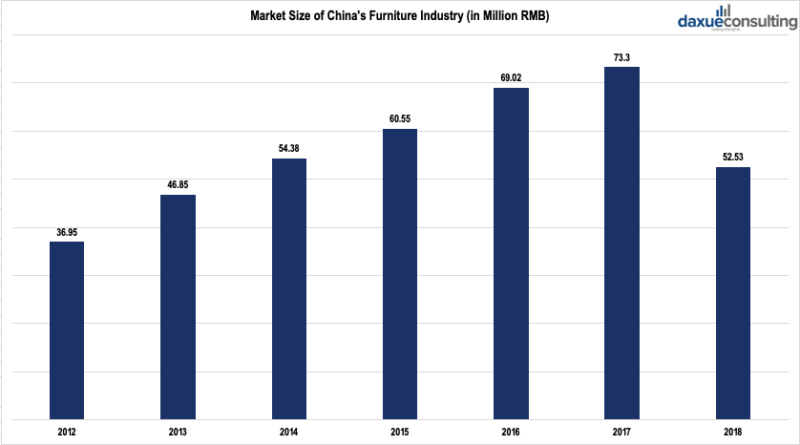
[Data source: chyxx, ‘China’s furniture market size’]
Performance of IKEA in China: affected by preferences of furniture consumers in China
China’s furniture market is still developing with advanced manufacturing and application of information technology in production. Furniture enterprises will have to upgrade their products to bring greater added value by raising the level of technology in innovation to achieve “low cost, high quality, high efficiency”. At this moment, the future development trend is green manufacturing in which the whole life cycle of products must be conducive to the environmental protection and the reduction of energy consumption. Foreign industry players will need to step up their pace of entering china. As of 2015, global furniture retail giant IKEA in China has opened up to 18 stores and the largest sourcing country with 22% of its global purchases with about 300 local suppliers. The company intends to expedite its pace of expansion in China, hence number of stores is increasing every year.
As of August 2019, IKEA in China has opened 28 stores. Even though this figure is increasing, the growth rate of sale volume in China’s market dropped to 9.3% in 2018 in contrast with more than 10% from 2011 to 2017. This can be explained by the fact that furniture consumers in China are demanding products with more than design, in other words, quality matters. IKEA’s furniture receives criticism in China for not being durable and this has affected IKEA’s reputation in China. Apart from the quality, some Chinese netizens say the interior and the location of IKEA’s stores are not consumer-friendly.
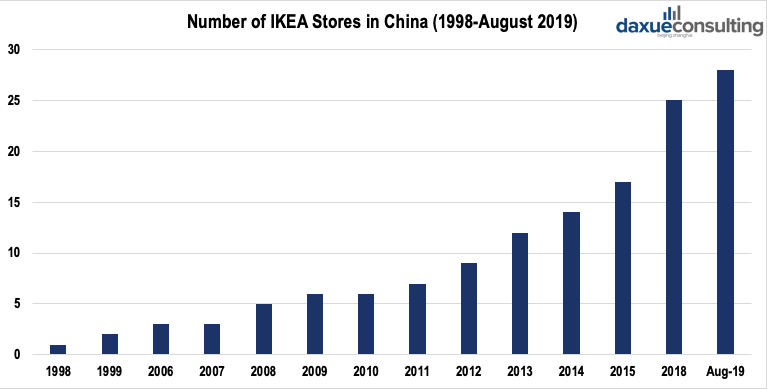
[Data source: winshang, ‘Number of IKEA stores in China’]
IKEA in China’s strategy for the China’s furniture market: Standardization VS localization
Furniture Retail Giants, IKEA Group a franchisee of Inter IKEA Systems BV brings its unique style and sales model to China. IKEA in China belongs to IKEA Group and operates as a joint venture. This venture served as a good approach to test the market, understand the local needs and adapt strategies to gain competitive advantage. IKEA had to make adjustments to its marketing strategy as the company uses its product catalog as a major marketing tool. IKEA in China realized that digital marketing was the way to go, with that IKEA Group used digital technologies using the internet such as Chinese social media and micro-blogging for their marketing campaign to gain market attractiveness and brand recognition. Also, IKEA had to adjust its store location strategy as most consumers in China use public transportation. Rather than the usual stores in the suburbs, IKEA sets up its stores on the outskirts of cities which are connected by rail or metro networks.
IKEA in China has made all the necessary adjustments to certify that there were minimal obstacles in its growth ambitions, and brand promise. IKEA has demonstrated courage, adaptation, and awareness to shift its production, work with local sources, overcome legal requirements and adapt brand proposition to suit the level of development of the market and consumer perception. With that, to grow globally requires sacrifices and innovation from global teams, listening to the local team, and learning with an open mind.
As mention as an example above, IKEA entered the Chinese market by learning from their mistakes and continuously adapting to the changing environment. Not many companies have the ability to go through trial and errors because it is very costly when mistakes are made. Moreover, IKEA’s strategy in China’s market embodies either standardization or localization, sometimes both of them.
IKEA’s strategy in China’s market: maintaining core value of IKEA’s business (standardization)
“To create a better everyday life for the many people” is the IKEA vision. The business objective of IKEA is to “offer a wide range of well-designed, functional home furnishing products at prices so low that as many people as possible will be able to afford them.” In order to execute this business objective, IKEA applies the same business model (the inferior of the store, a range of products and services and the management style) everywhere, including China. Furthermore, the design of IKEA’s furniture which features simplicity are are popular among young people in China. This has become one of IKEA’s business drivers in China.
IKEA’s strategy in China’s market: updated sales channels (localization)
Development of IKEA’s E-commerce
Since E-commerce is a current trend in China’s business market, many firms have keep pace with it and updated their sales channels, IKEA is among them. In 2016, IKEA officially launched the online shopping service in Shanghai. Two years later, the service has expanded to 149 cities in China. In 2018, IKEA made an official announcement that its official website is the only online sales channel in China. By collaborating with Amazon and Boyol the logistic firm, IKEA categorizes the products into “small-scale parcels” and “large-scale parcels”. What is more, the delivery price of small-scale parcels is 9.9 RMB whereas that of big-scale parcel is 69 RMB. It can be seen that IKEA attempts to lower the delivery fees in order to maintain and expand its customer base in China. Updating sales channel is a milestone in IKEA’s business in China as the company tries to reach its customers in multiple ways.
Collaboration with downtown shopping centers
IKEA received criticism on the inconvenience of their store locations, as they are located in remote areas. In order to tackle this issue and satisfy customer’s need, IKEA has established collaboration with downtown shopping centers, that is, building mini IKEA stores in these shopping centers. In 2016 and 2017, IKEA opened Pick UP & Order Point stores with the area of 1800-3000 square meter in Wenzhou and Beijing respectively. These actions have proven that IKEA has tried to approach IKEA customers in China while meeting their expectation.
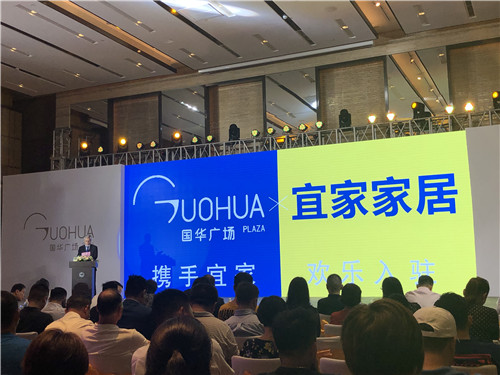
[Photo source: winshang, ‘Guohua Shopping Center and IKEA’]
Pop-up stores are the current trend
Going to a place and posting photos regarding the experience on social media platform has been a trendy consumer behavior in China. By taking advantage of this, from August 24th to October 7th, IKEA launched its pop-up store in Beijing featuring youth and urban lives. It was such a good promotion which potentially led to increase in customer base since many young people noticed it and went there to take photos. It was not the first trial for IKEA to open such an unusual store. In December 2017, IKEA have started opening pop-up stores for the purpose of selling small-scale items. By the end of September 2019, IKEA has opened 2 concept stores in China in order to amaze IKEA customers in China meanwhile promoting their services and products.
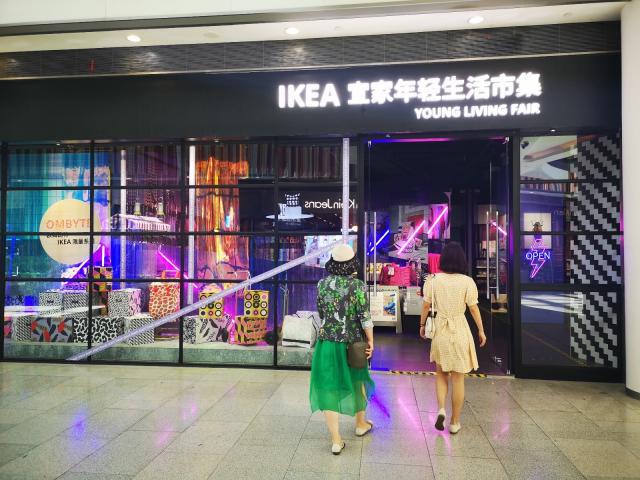
[Photo source: China.cn, ‘Pop-up store of IKEA in China’]

[Photo source: China.cn, ‘Pop-up store of IKEA in China’]
IKEA’s strategy in China’s market: service and product diversification (standardization + localization)
IKEA’s catering business in China is astonishingly successful. In 2015, IKEA’s cafeterias served over 31 million IKEA customers in China, sold 6 million units of meatballs and 12 million units of ice-cream. Cafeterias have large contribution regarding the sales value of the whole IKEA business. In the global market, it occupies 5% of the total sale value while 10% in China’s market.
As for the standardized food, Swedish meatballs and IKEA’s ice-cream are the signature dishes. Because of IKEA, Swedish meatballs and sauces come to be the nation’s dish of Sweden. Moreover, IKEA customers in China like the meatballs. Selling Swedish meatballs in IKEA enables Chinese customers to taste something exotic.

[Photo source: Sohu, ‘Swedish meatball of IKEA’]
China’s IKEA stores localize the food options
Apart from the signature, in order to tailor to local tastes, IKEA also keeps developing and launching localized dishes that fit the preference of IKEA customers in China. For example, in Guangdong, there is dim sum in IKEA’s cafeterias; in Sichuan, customers are able to taste Sichuan hotpot; in Shandong, spicy crayfish are the common dishes in the cafeteria. Although, people can have these authentic dishes in other restaurants instead of IKEA, it is a method to keep people in the store so they do not have to leave when they get hungry. In order to distinguish from the authentic Chinese dishes, IKEA promoted the localized dishes by linking them with Northern Europe on social media platforms. By doing this, IKEA is able to create sensations and draw existing and potential consumers’ attention.
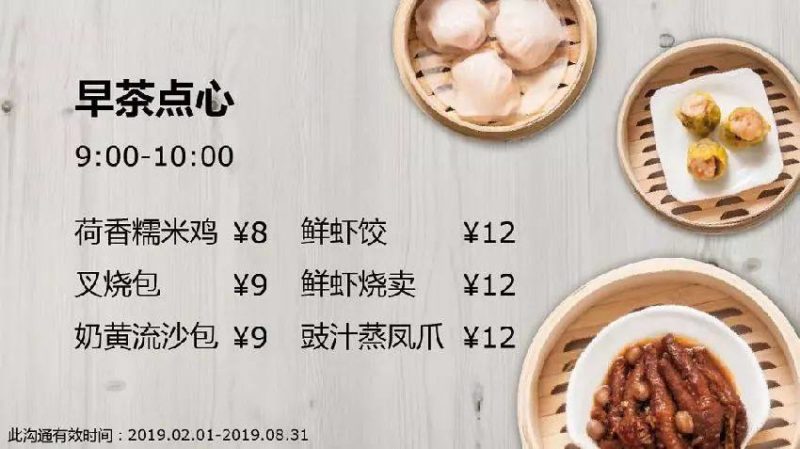
[Photo source: Sohu, ‘Dim Sum of IKEA in Guangdong’]

[Photo source: Sohu, ‘Hot pot of IKEA in Sichuan]

[Photo source: Sohu, ‘Spicy crayfish of IKEA in China’]

[Photo source: Sohu, ‘IKEA’s promotion in China via social media platforms’]
IKEA’s challenge in China: how to turn controversial consumer behavior into business opportunity
With the increasing scale of IKEA’s market expansion in China, the company has confronted with a troubling phenomenon. Consumers would sleep and hangout on display furniture in IKEA’s stores. Initially, it was reported by western media and went viral on social media as people discussed whether it was appropriate or not. One interesting review argued that sleeping on IKEA’s display furniture was understandable as the noon nap is a common habit in China. In order to deal with the challenge, IKEA announced that they had no intention to prohibit customers from sleeping on their furniture as they did not perceive that it was a problem. Instead, they were delighted to see that consumers thought IKEA was like their home. The rationale behind the permission was that the more consumers try on, the more they likely to purchase, since sleeping on IKEA’s display beds is a mean of trial. In addition to IKEA’s permission, IKEA also set up pop-up displays their so that customers are able to have a rest in the area of pop-up displays.

[Photo source: World, ‘IKEA allowed customers to sleep in its Chinese stores’]
Let China Paradigm have a positive impact on your business!
Listen to China Paradigm on iTunes
















